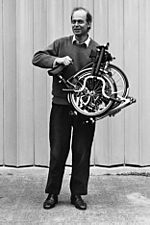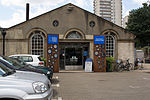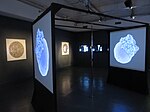The Kew Herbarium (herbarium code: K) is one of the world's largest and most historically significant herbaria, housed at the Royal Botanic Gardens, Kew in London, England. Established in the 1850s on the ground floor of Hunter House, it has grown to maintain approximately seven million preserved plant specimens, including 330,000 type specimens. The herbarium's collections, which include specimens dating back to 1700, represent about 95% of known vascular plant genera and 60% of described fungi, with specimens collected over 260 years of botanical exploration. The herbarium processes around 5,000 specimen loans annually and hosts approximately 3,000 visitor-days of research visits each year, supporting a wide range of botanical research.
The herbarium's development has been closely tied to British botanical exploration and colonial expansion, with contributions from influential directors like Sir Joseph Dalton Hooker and major acquisitions including the Gay Herbarium. Research at the herbarium has contributed to botanical taxonomy, with publications such as the Index Kewensis, initiated with funding from Charles Darwin in 1882, and the Kew Record. The facility has undergone several major expansions since its first purpose-built wing was constructed in 1877, with Victorian architecture that includes spiral staircases, iron columns, and vast handcrafted wooden cupboards. In 2022, the herbarium initiated a £29 million digitisation project to produce high-resolution images of its collection, with a target completion date of 2026.
The herbarium is a resource for botanical research in taxonomy, conservation, ecology, and climate science. Its specimens offer data that aid in tracking environmental changes, studying plant diseases, and identifying new species, as demonstrated by the 2022 discovery of Victoria boliviana, the world's largest water lily species, which had remained unrecognised in the collection for almost two centuries. The herbarium's future is currently subject to debate, with controversial plans announced in 2023 to relocate the collection to Thames Valley Science Park, prompting discussion about the balance between preservation needs, research accessibility, and maintaining the historic connection between the herbarium and Kew's living collections.











